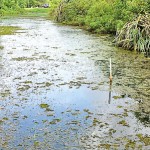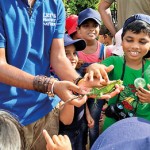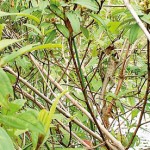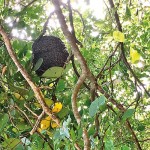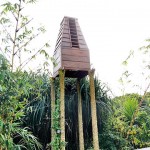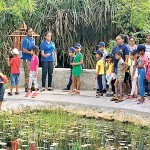Fun-filled day in the wilderness
I was very excited as I arrived at the Thalawathugoda, Diyasaru Park to
participate in the Nature Walk
organized by the Wildlife and Nature Protection Society of Sri Lanka.
The event was advertised in the
Funday Times.
Diyasaru Park is an urban wetland. A wetland is where the land is always wet. It is home to wildlife such as
butterflies, rodents, civets, mongooses, fish and the endangered ‘fishing cat’.
We were led by a guide from the Young Zoologists Association.
We first came to a man-made pond to which fishing cats visit at night.
We curiously looked around the nearby trees hoping to spot one. Suddenly one boy from the group screamed out,
“There it is!” However when we turned to look in that direction it turned out to be a life-sized cutout of a fishing cat.
Near the pond, there were many
dragonflies and damselflies.
The dragonfly lands on plants with its wings spread apart while the damselfly lands with its wings folded up along its body.
As we walked along, we saw a tall wooden house-like structure called the ‘Bat House’ with horizontal poles for bats to hang upside down and sleep during the day.
We next came to a pond. The surface was green, covered with moss. It took us some time to identify the heads of a large number of ‘Indian green pond frogs’
popping out of the water. We also spotted a pair of ‘purple swamp hens’ with their chicks and many brownish black water hens. I also saw a pair of ‘red wattled
lapwing’ through my binoculars.
Further along the path, we came to a massive black sponge hanging from a tree but our guide warned us to be quiet as it was a bee hive filled with bees.
We were also lucky to see many
butterflies and the ‘white-breasted
king fisher’. Our guide also showed us the fruit of a Watakeiya – a mangrove shrub. We almost stepped over some lumps of faeces. “A civet has passed by,” said our guide. We observed a green garden lizard camouflage into brown, when on a tree.
I learnt much about wetlands and
fishing cats from Anya from the
Urban Fishing Cat Conservation Project, who spoke to us at the end of the
programme and I hope to see
a fishing cat in my garden some day.



